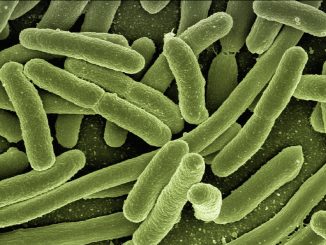
Rhizobium meliloti (Sinorhizobium meliloti)
Sinorhizobium meliloti (now more commonly known as Rhizobium meliloti following taxonomic revisions) is a species of Gram-negative, nitrogen-fixing bacterium that forms a symbiotic relationship with […]

Sinorhizobium meliloti (now more commonly known as Rhizobium meliloti following taxonomic revisions) is a species of Gram-negative, nitrogen-fixing bacterium that forms a symbiotic relationship with […]

Artificial Intelligence (AI) refers to the simulation of human intelligence in machines that are programmed to think, learn, and make decisions in a way that […]

Pseudomonas denitrificans is a species of bacterium that belongs to the genus Pseudomonas, a group of Gram-negative, aerobic bacteria known for their versatility in metabolism […]

Bacillus megaterium is a species of Gram-positive, rod-shaped, spore-forming bacterium. It is part of the Bacillus genus, which includes a number of bacteria known for […]

Natural antifreeze mechanisms in biological cells enable certain organisms to survive and thrive in extremely low-temperature environments. These adaptations are particularly crucial in polar and […]

Intuence is a next-generation data-analysis platform designed to accelerate insights by leveraging advanced data analytics and artificial intelligence (AI). It is tailored to facilitate the […]

Weighted Gene Co-expression Network Analysis (WGCNA) is a widely used method for analyzing the relationships between genes based on their expression profiles. It is particularly […]

Spider silk proteins are truly fascinating, and they represent a cutting-edge development in biomaterials and sustainability. Here’s everything you need to know about them: What […]

Continuous bioprocessing, a production approach where the input materials are fed into a bioreactor continuously and the product is harvested without stopping the process, now […]

Small nucleolar RNAs (snoRNAs) are a class of small RNA molecules found primarily within the nucleolus of eukaryotic cells. They play crucial roles in the […]

Enzymes are biological catalysts that accelerate chemical reactions essential to life. Among the many regulatory mechanisms controlling enzyme activity, allosterism—the modulation of enzyme function through […]

Synthetic small RNA (sRNA) refers to artificially designed and synthesized small RNA molecules that are engineered to regulate gene expression in various organisms. These sRNAs […]

I’m always fascinated by how we have fashioned cells into small factories. They produce a great range of products from food and beverage to pharmaceuticals. […]

Ultra-large virtual screening refers to the use of computational techniques to rapidly evaluate a vast number of compounds or molecules to identify potential candidates for […]

Synthetic mRNA has so many uses now in biotechnology. It is one of the great genetic engineering tools available now that can transform a static […]

Erythromycin is a broad spectrum macrolide antibiotic that has been widely used to treat various bacterial infections, particularly those caused by Gram-positive bacteria and some […]

Bacteriophages, often referred to as phages, are viruses that specifically infect and replicate within bacteria. The term “bacteriophage” originates from the Greek words “bakterion,” meaning […]

Gene duplication is a significant evolutionary event where a segment of DNA, including one or more genes, is copied and inserted into the genome. This […]

ITS2 and 18S rRNA sequencing are key molecular techniques used for identifying and classifying fungi and yeast. Both are DNA-based methods that involve sequencing specific […]

Using serverless data portals to make data FAIR (Findable, Accessible, Interoperable, and Reusable) involves leveraging serverless computing technologies to create data infrastructure that supports the […]
Copyright © 2025 | WordPress Theme by MH Themes